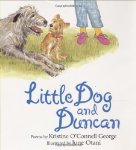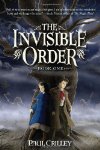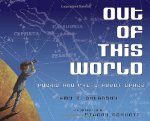Kathryn Lasky
Illustrated by Stephen Gilpin
Fiction
For ages 7 to 9
Scholastic, 2010, 978-0-545-11681-7
Felix the brown recluse spider lives in a philharmonic
hall with his mother Edith and his two sisters. Felix is a devotee of music and
greatly admires the Maestro who always stays in the theatre after a performance
is over to practice his conducting. Felix and his sisters have always been told
that the most important rule to remember is to “never, ever reveal yourself to
human beings,” and they always do their best to follow this rule. They know all
too well that humans hate spiders, especially species that are venomous, which
Felix and his kind are.
Then one evening
Felix makes the mistake of letting the Maestro see him. The Maestro hits Felix
with his baton, and then he passes out. Though the Maestro is not dead, he has
seen Felix, and everyone knows what is going to happen next. Exterminators will
be hired to rid the music hall of spiders. Felix and his family are going to
have to move.
Poor Felix feels
very bad about what has happened, because he never meant to cause so much
trouble. At the same time, he is rather annoyed at the unfairness of his
situation. It is not his fault that he was born a brown recluse spider. It is
not his fault that he has highly poisonous venom that can kill people. It is
not fair that he has to hide himself because of who he is. He isn’t just a
venomous spider, he is also a kind fellow who loves music.
Felix and his
family are lucky enough to have a cat friend, Fatty, who carries them to a
dusty antique shop specializing in maritime “treasures.” The shop is a perfect
temporary stopping place for all of them, including Fatty, who will be able to
hunt for mice. There are other spiders in residence who are unkind to Felix and
his family, but the recluses are used to this sort of thing. They are not only
feared by humans, they are also despised by other spiders as well. It is such
an unfortunate situation, but it is one that they just have to put up with.
Then pirate
spiders attack, and Felix and his family are presented with a new set of
problems. Will they ever be able to have a safe, happy, and quiet life?
Many people are
unfairly judged in this world because they are different in some way. In this
book, young readers will see how this feels through the eyes of recluse
spiders. Rather than hiding away, artistic Felix wants others to see him for
who he is and not for what he is. Surely, this is what everyone wants.
With humor and
sensitivity, Kathryn Lasky tells a story that explores big and meaningful
themes from the point of view of very small animals. Her tale is a joy to read,
and readers will be glad to know that this is the first book in a new series.
Felix and his family will be back.









